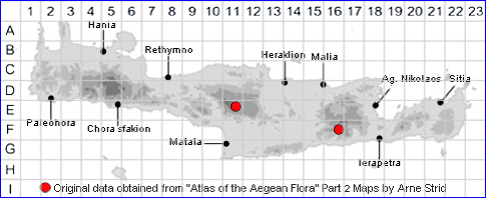
SPECIES DESCRIPTION
CERASTIUM PUMILUM subsp. GLUTINOSUM
Family:- CARYOPHYLLACEAE
Common Names:- None
Synonyms:- Cerastium diffusum, Cerastium glutinosum
Meaning:- Cerastium (Gr) Horned, (the fruiting capsule's shape).
Pumilum (L) Very small, low, small, dwarf.
Glutinosum (L) Sticky, viscous, glutinous. with glue.
General description:- Ascending to erect annual.
Stem:-
1) 4-12(-20) cm. Whole plant usually pale green to yellowish-green.
2) Lower part patently glandular-pubescent.
Leaves:-
1) 5-20 mm.
2) Lower oblanceolate to spathulate.
3) Upper ovate to elliptical, patently glandular-pubescent.
Flowers:-
1) Pedicels much longer than the sepals.
2) Bracts usually herbaceous.
3) Sepals 4-9 mm, ovate-lanceolate to lanceolate, acute or gradually narrowing to a
point (acuminate), with a dry, paper-like (scarious) margin at the apex for up
to 1/10 their length, with glandular hairs, and some eglandular hairs not
exceeding the apex.
4) Petals shorter than the sepals, bifid for c. 1/5 their length, with branched veins.
5) Stamens and Styles 4 or 5.
Fruit:-
1) Capsule 5-10 mm.
2) Seeds 0·4-0·7 mm, yellowish to chestnut-brown, bluntly tuberculate.
Key features:-
1) Fruiting pedicels 0.8-2 times as long as the sepals, patent or recurved.
2) Flowers often 4-merous.
Habitat:- Dry, open sandy and rocky places, mainly in coastal areas, occasionally
to 1800 m on mainland Greece.
Distribution:- Throughout Greece, especially in the north - most of Europe,
introduced elsewhere. Very rare on Crete currently known from only two locations.
Flowering time:- Mar-May
Photos by:- Courtesy of Wiki-Commons.
